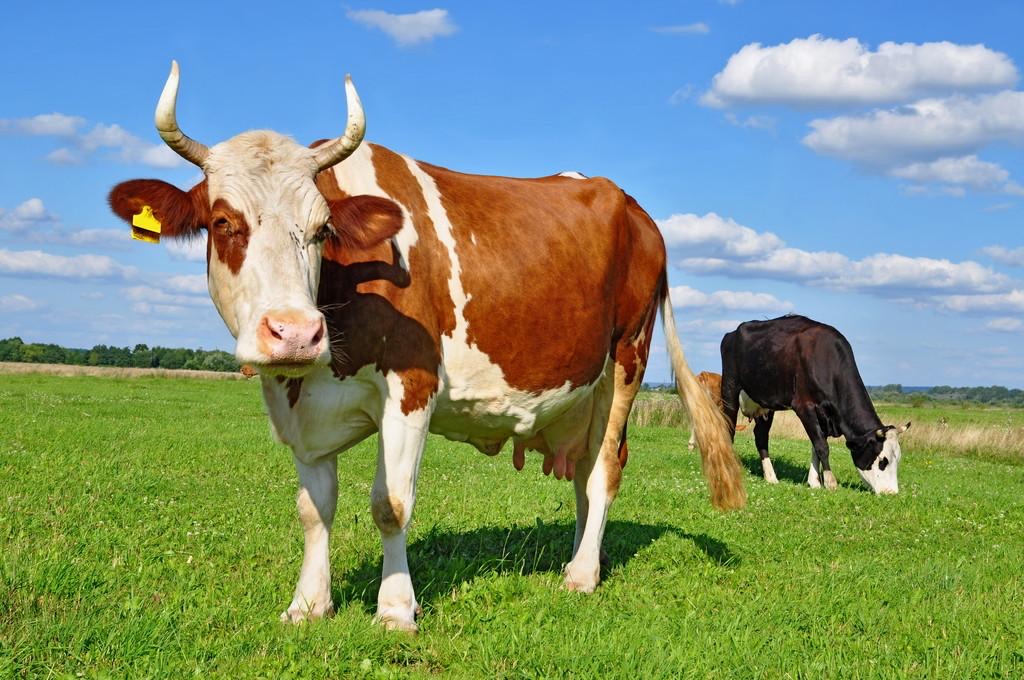
- Online pavilions:
- Veterinary medicines
- Veterinary raw materials
- Other
- Asia
- America
- medical instruments

News briefing: we must do a good job in the prevention of major diseases, and vaccinate timely and scientifically; third, we must maintain hygiene and regularity. Do a good job of deworming and disinfection to prevent the invasion of foreign diseases.
The temperature in spring is changeable. If the feeding and management are not carried out properly, it is easy to cause a variety of diseases in cattle. The five common cattle diseases and their prevention and control techniques are introduced below for reference.
influenza:
1. Cause: The main cause is the changeable temperature and sudden cold attack.
2. Symptoms: depression, sometimes tearing, clear nose, loss of appetite, or even abolishment, rare or no rumination, body temperature sometimes as high as 41℃.
3. Treatment: The treatment of this disease is mainly antipyretic and analgesic. 20-40 ml of compound aminopyrine solution or 30% analgin solution can be injected intramuscularly, 1 to 2 times a day. In order to prevent secondary infections, after using analgesics, if the body temperature does not drop or the symptoms do not alleviate, sulfa drugs or mixed feelings can be used appropriately.
4. Prevention: In addition to strengthening feeding management, livestock should be prevented from catching cold when the weather changes suddenly. If the sick cow is found, isolate it in time, and provide more warm drinking water plus some astragalus double antibodies.
Rumen gas:
1. Cause: The main reason is that the cow's feed suddenly changed from hay to green grass, which caused the feed to ferment in the rumen, produce a large amount of gas, and swelled into disease. In addition, eating rotten forage can also cause this disease.
2. Symptoms: rumination stopped, arched back, head often bent to the abdomen, abdomen quickly swelled, the left is most pronounced, breathing difficulties, and even the appearance of mouth and tongue, acute symptoms such as sweating, panic, restlessness, severely ill walking or shaking or Suddenly fell to the ground and died.
3. Treatment: ① 20 grams of garlic, mash, add 5 grams of cooking oil, 15 grams of vinegar, and mix once; ② Place a wet wooden stick in the cow’s mouth, let the cow lick it, and use a bamboo stick at the same time. Extend under the abdomen, and the two of them hold the bamboo poles on both sides and slowly roll under the cow's abdomen to help the steak release gas; ③Acute rumen swelling, you should puncture the rumen with a trocar on the left side to deflate the gas Not too fast, so as not to cause acute cerebral anemia.
4. Prevention: Don't feed moldy fodder, don't overeat tender grass, especially leguminous pasture, to cattle at one time. You can feed proper amount of hay before grazing.
Rumen food accumulation (rumen food stagnation)
1. Cause: Mainly indigestion or eating too much moldy forage.
2. Symptoms: The affected animal stops eating, ruminant is weakened or stopped, rumen peristalsis is weakened, usually a small amount of soft feces or loose feces, and blood and mucus are attached to the feces in severe cases. The arched back is bent over, and the abdomen is enlarged. In the later stage, breathing is urgent, pulse is quickened, and body temperature is generally unchanged.
3. Treatment: Oral laxative, you can use 400~500 grams of sodium sulfate and water to make a 10% solution, and add 20~30 grams of ichthyol, once per dose, when severe cases are accompanied by dehydration and acidosis, compound chlorination can be injected intravenously Sodium solution or 5% dextrose physiological saline, 2000~3000ml each time, 2~3 times a day.
4. Prevention: Prepare feed reasonably and do not feed moldy or rotten feed.
Bovine parasitic diseases:
1. Causes: Mainly due to the infrequent cleaning of the barn and parasites such as scabies or ticks on the skin.
2. Symptoms: part or all of the coat of the affected cow is off, the boundary between the affected part and the healthy part is obvious, and there are small granular nodules on the edge, forming a scab.
3. Prevention and treatment: ①Ensure that the body of the cow is clean and rub the affected area with 2% trichlorfon solution; ②Oral use of Chongjiexin and Neiwaijingjing; ③Subcutaneous injection of abamectin and ivermectin.
In order to prevent cattle from getting sick, we should establish the idea of "prevention is more important than cure". First, we must strengthen feeding and management to enhance the resistance of cattle; second, we must do a good job in the prevention of major diseases, and vaccinate timely and scientifically; third, we must maintain hygiene and regularity. Do a good job of deworming and disinfection to prevent the invasion of foreign diseases.